|
|
Making shorting links for live-axle pick-up |
|
|
|
A fast and furious run-down of how I make up wheelsets for locos that have live-axle pick-up. With particular reference to modern, British-made finescale wheelsets such as those made by Alan Gibson, Sharman or Ultrascale.
And yes; if suitable I use these sorts of wheels in both European and American models, as well as British!
|
|
|
|
|
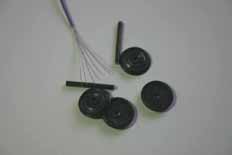 |
|
|
|
|
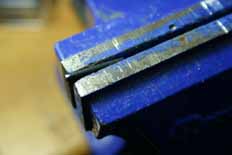 |
|
|
|
|
|
|
Parts required are; the wheels and axles you want to short and some fine wire. I tend to use 5Amp fusewire most of the time, but stripping wire from cable works just as well. The blackened wheel tyres and axles (courtesy of an Alan Gibson wheelset) will help as we go along. You'll see! |
|
|
|
|
|
First thing to do is to put a slight draft on the axle where the wire will fit. The shiny spot on the end of the axle should give an idea of the size and shape required. There's another one on the other side of the same end of this axle because I use two wires. Better safe than sorry. |
|
|
|
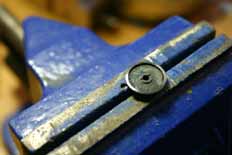 |
|
|
|
|
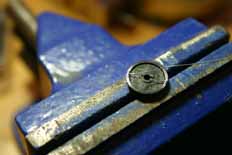 |
|
|
|
|
|
|
The wheel is prepared by being cleaned with emery paper, glass-fibre brush etc. so it's clean and shiny for soldering. At the wheel boss two small grooves can be cut in line with the polished areas - it gives somewhere for the wire to run. |
|
|
|
|
After tinning the end of the wire(s) the back of the wheel can be tinned where it was polished. Use a hot iron, plenty of flux and a fairly low temperature solder; 144° is fine. The aim is to get in and out without overheating the centre. If you can smell it or it's too hot to hold then you've probably overdone it. Once tinned the wire can then be soldered onto the back of the wheel rim. |
|
|
|
|
|
|
|
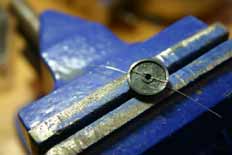 |
|
|
|
|
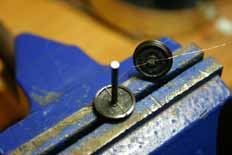 |
|
|
|
|
|
|
With the wires successfully soldered to the back of the wheelrim they can then be fed through the axlehole and gently pulled straight and taught through the grooves. |
|
|
|
|
|
The axle can then be pressed home. As it goes into the bore of the wheel the axle will trap the wire. I tend to put small blob of a suitable retainer such as Ritelock RT01 or Loctite 601 on the end of the axle when doing this. Threadlock such as TL42 or 242 is also suitable (though less permanent), but don't use superglue! Of course, you don't have to use anything if you don't want to - I just prefer to know which wheel is going to move when I press the opposite wheel on. The last job is to carefully clean up the solder and wire end where it meets the rim. Careful work with a needlefile and some emery paper will take care of it. |
|





